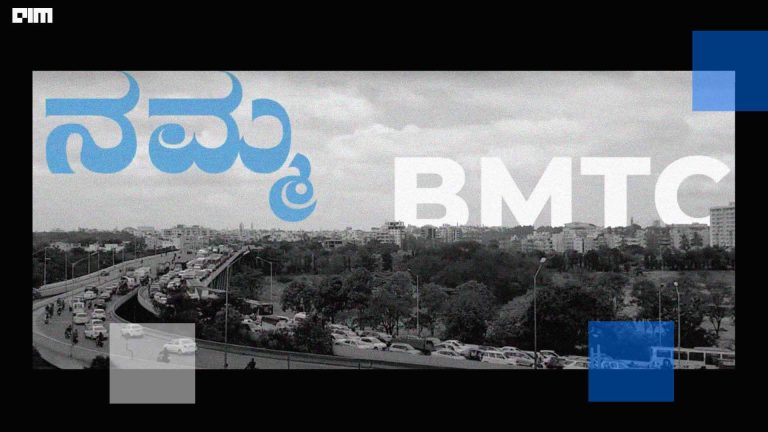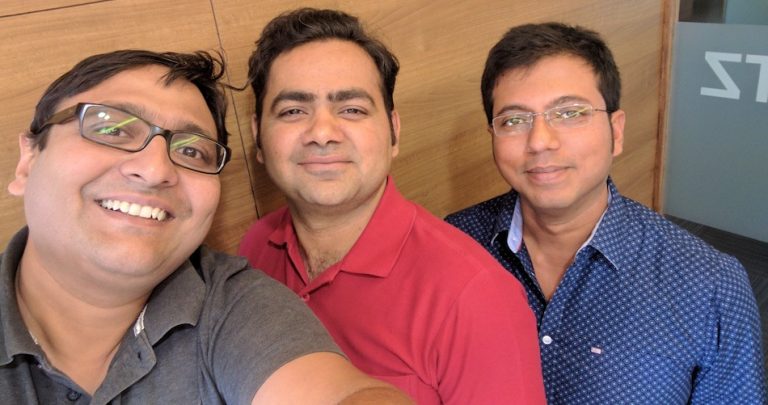Within the AI landscape of India, with the minimal funding that startups get, it is hard to get into the sector, especially if you are getting into robotics. But backed by the power of jugaad, a team of experts from Tesla, and advisors from India, Bengaluru-based Control One has taken up the task of building the next Boston Dynamics from the country.
The key to Control One’s innovation lies in its focus on vision-based Visual SLAM (Simultaneous Localisation and Mapping) systems instead of traditional LiDAR technology. “Using vision, we try to make the machine understand its surroundings and navigate accordingly,” said Pranavan S, the founder and CEO, in an interaction with AIM.
Recently, this one-year-old startup unveiled India’s first physical AI agent for the global market, which was installed on a forklift. With the integration, the forklift could interact with its surroundings and execute tasks based on simple voice inputs. The company calls it a 3-brain system, where operators can manage the AI decision remotely in real-time.
Visual SLAM, or vSLAM, helps the robot navigate using reference points in the environment, just like humans do. Pranavan said what separates Control One from every other robotics company in India is the focus on building an operating system for robotics.
Currently, the forklift operates only on the ground but Pranavan said they aim to operate it in three directions, which includes picking up objects and placing them.
Founded in 2023, Control One attracted investment in April and raised $350k from industry leaders like iRobot co-founder Helen Greiner, CRED founder Kunal Shah, and executives from Tesla, Walmart, and General Electric.
Last year, NVIDIA Research unveiled Eureka, an AI agent that automatically generates algorithms for training robots using GPT-4 prompts and reinforcement learning. It seems like that is the future when physical AI agents will be everywhere.
OS for Robots
But when it comes to Control One, “We are building an OS that can understand the environment around it, akin to human behaviour,” explained Pranavan. “For example, we humans navigate dynamically, even in crowded and ever-changing environments, using our vision and depth perception to take predictive actions. This is what we aim to achieve with our machines.”
Control One’s OS, dubbed ‘One AI’ can be seamlessly integrated into existing warehouse equipment like pallet movers and forklifts. These systems autonomously navigate and improve performance over time, setting a new standard for intelligent material movement.
Currently only operated using remotes, Control One aims to introduce prompts in natural language in the future, but the issue is around the regulations of the same.
Pranavan elaborated on the advantages of vision systems over LiDAR. “LiDAR can detect obstacles, but it doesn’t understand what those obstacles are or their movement dynamics. vSLAM, on the other hand, can analyse pixel vectors to determine if an object is approaching, moving away, or crossing paths, allowing the robot to make more informed decisions.”
Despite their focus on vision systems, Control One acknowledges the complementary role of LiDAR for safety. “We use LiDARs to meet market safety standards, ensuring our robots can stop immediately if they get too close to an object,” said Pranavan.
Though the company does training in the real-world, simulation also accounts for around 30% of the training. “The problem with simulation is that the AI would work in the settings you put it in, but when transferred into the real world, uncertainties such as uneven floor can also affect the physical agent’s performance,” said Pranavan.
The Boston Dynamics of India
While there are companies such as DiFACTO Robotics, Novus Hi-Tech, and Gridbots Robotics, Control One is focused on building the whole stack of a robot using physical AI agents.
The most interesting part is that all of this happens on-edge using NVIDIA A2000 GPUs. “We started with NVIDIA’s A5000 series but moved to the 2000 series to reduce power consumption,” said Pranavan. “Our next iteration will consume less than 80 watts and run entirely on battery, extending its operational life.”
This efficient use of power is crucial for Control One’s vision-based system, which demands significant computational resources. “Our current demo operates at 280 TOPS of AI computing power, plus it runs on an AMD processor. The next iteration will be more power-efficient while maintaining high performance.”
Pranavan, with experience of building SP Robotics Works as a co-founder, said that frugal innovation has always been part of what Indian startups do, explaining how he started figuring out how a 128 MB RAM computer worked back in his young days.
He said that to compete with Boston Dynamics, they need at least $500 million in funding, but “given our capital efficiency and cost factors, we would be able to do with $100 million as well”.
Giving AI to Blue Collar Jobs
Control One is focusing on the warehousing sector, where there is a significant labour shortage and a high demand for automation solutions, especially in the global market. “The warehousing market is facing a huge labour crisis. Our system enables one person to manage multiple robots, effectively multiplying their productivity,” said Pranavan.
One AI is designed to manage entire fleets of robots, enabling remote operation and supervision. “Our ultimate goal is to allow one person in a remote location to manage an entire warehouse in another part of the world. OneAI will be the interface between humans and machines, helping operators make informed decisions.”
With a vision of building a humanoid, maybe in the future, Pranavan said that you don’t necessarily need to build a humanoid to operate machinery in factories. “We are operation system makers, not humanoid makers, yet,” said Pranavan, as he says that he is looking to partner with OEMs in the future, with several already under way.
































